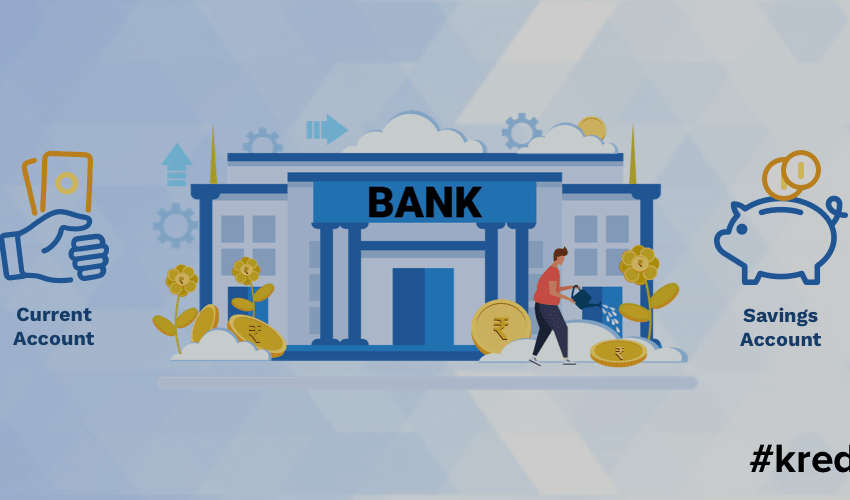
Difference Between Current & Savings Account
When it comes to managing your finances, choosing the right type of bank account is crucial. Whether you’re saving for a rainy day or conducting business transactions, the type of account you opt for can significantly affect your financial health. This blog aims to unpack the similarities and differences between Current and Savings accounts, helping you make an informed decision.
Basics of Bank Accounts
A bank account serves as a financial platform where you can store your money securely while having various options for withdrawals and deposits. Different bank accounts cater to specific financial needs, such as daily spending, savings, or business transactions.
What is a Savings Account?
A Savings Account is primarily intended for—you guessed it—saving money. These accounts often offer interest rates that help your money grow over time. They’re the go-to option for people looking to build a financial cushion. However, these accounts usually come with withdrawal limits, restricting the number of times you can take money out each month.
What is a Current Account?
A Current Account, often referred to as a Checking Account in the United States, is designed for frequent transactions, including deposits, withdrawals, and transfers. They are most commonly used for business operations but can be used for personal finances as well. Unlike Savings Accounts, Current Accounts generally don’t offer interest rates but provide more flexibility in terms of transactions.
Key Differences Current & Savings Account
Purpose
Savings Accounts are designed for individual use, encouraging you to save. On the other hand, Current Accounts are built for regular, often business-related, transactions.
Interest Rates
Savings Accounts usually offer interest rates to incentivize saving, while Current Accounts typically do not.
Withdrawal Limits
You might encounter restrictions on how often you can withdraw from a Savings Account. Current Accounts usually offer unlimited transactions.
Minimum Balance Requirements
Current Accounts often require you to maintain a higher minimum balance compared to Savings Accounts.
Overdraft Facilities
Overdrafts are generally not available in Savings Accounts but are a common feature in Current Accounts.
Transaction Fees
While Savings Accounts are usually low-cost or free, Current Accounts might charge fees for the frequent transactions they facilitate.
Use Cases
Personal Savings Goals
A Savings Account is your best bet if you’re building an emergency fund or saving for a vacation.
Running a Small Business
Regular transactions and cash flow management are more accessible with a Current Account.
Freelancing
Freelancers who manage personal and professional finances might benefit from having both accounts.
Trending Features in 2023 (Hypothetical)
Mobile App functionalities
Both types of accounts now offer robust mobile apps for seamless online banking.
Integration with Payment Gateways
Current Accounts are increasingly integrating with payment systems for smoother business transactions.
Higher Interest Rates
Some Savings Accounts now offer long-term customers loyalty bonuses or higher interest rates.
Real-Time Analytics
Spend tracking and category-based spending analytics are becoming more common.
How to Choose the Right Account
Before you decide, ask yourself these questions:
- What is my primary purpose: saving or frequent transactions?
- Do I need interest on my deposits?
- What is the minimum balance I can maintain?
- How tech-savvy am I? Do I need a strong mobile app?
Unlocking Higher Profits: Why KredX Could Be a Smarter Choice Than Traditional Savings Accounts
Investment platforms like KredX often offer a higher return on investment than traditional savings accounts. They provide diverse investment options that can be customized to meet your risk tolerance and financial goals. KredX and similar platforms also offer short-term, liquid opportunities, making your money work harder for you. These platforms often feature technology-driven tools to help drive informed investment choices, potentially enhancing profitability. Overall, KredX may offer a more dynamic and potentially lucrative investment environment than a regular savings account.
Conclusion
Choosing between a Current and Savings Account doesn’t have to be complicated. Understand your financial needs, compare the features, and make an informed decision that aligns with your financial goals. Both accounts have unique benefits; it’s just a matter of figuring out which suits your needs better.
Frequently Asked Questions
Can you convert a Savings Account to a Current Account?
Usually, you’d have to open a new account, but some banks offer easy transition options.
What are the tax implications?
Interest earned in Savings Accounts may be taxable, depending on jurisdiction. Current Accounts usually do not have this concern.
How does credit scoring affect these accounts?
Poor credit may limit your ability to open a Current Account with overdraft facilities but is less likely to affect a Savings Account.



